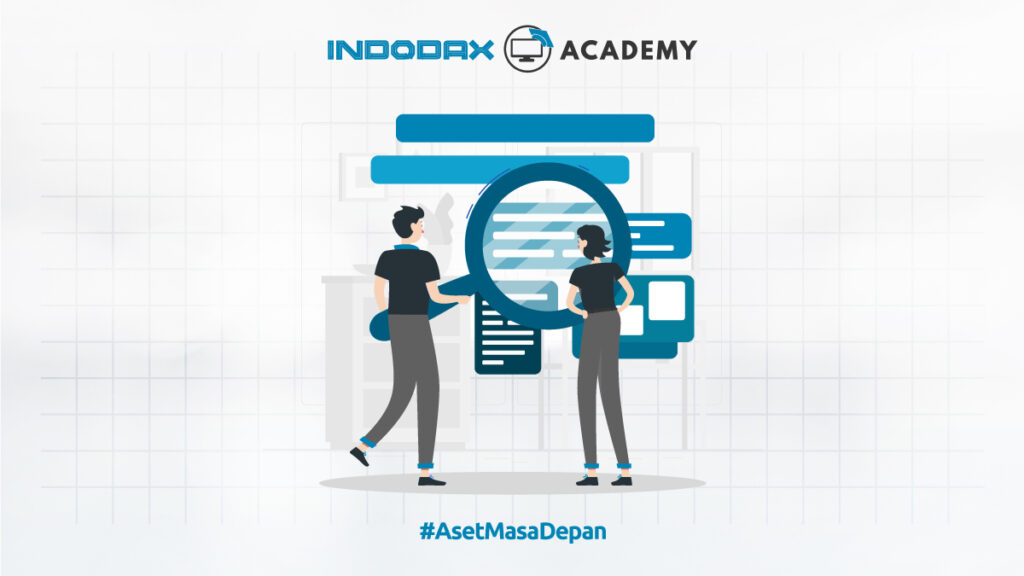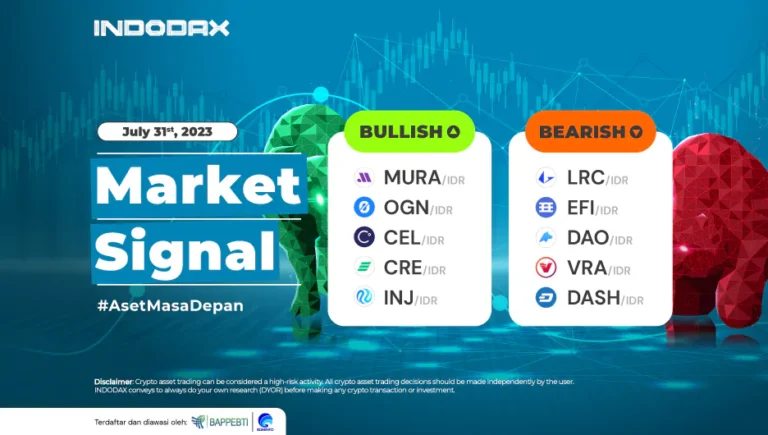Web 3.0 is one of the new technologies that will soon be present along with the rapid development of the times, after the emergence of Web 1.0 and 2.0 in the internet world.
A new breakthrough in the internet world will basically be able to understand everything that is conveyed by internet users, whether text, sound, or other media.
This is of course different from previous technologies, which could only accurately apply what internet users entered in their search engines.
Uniquely, this new breakthrough in the field of internet technology will be built on blockchain and cryptocurrency technology. So, to find out more about this technology and what are the differences between it, Web 1.0 and Web 2.0, see the following review.
What is Web 3.0?
This is the third generation of the upcoming internet, where websites and applications process information in an intelligent human-like manner through technology, such as Machine Learning (ML), Big Data, Decentralized Ledger Technology (DLT) and others.
Initially, Internet 3.0 was referred to as the Semantic Web by World Wide Web inventor Tim Berners-Lee and was intended to be a more independent, intelligent, and open internet. The definition could be extended to a place where data would be interconnected in a decentralized way, which would be a huge leap forward to create today’s internet (Web 2.0), with most of the data stored in desired repositories.
Then, users and machines can later interact with the data. However, for this to happen, the program needs to understand the information, both conceptually and contextually. With this in mind, the two cornerstones of Internet 3.0 are the semantic web and Artificial Intelligence (AI).
Web 3.0, Crypto and Blockchain
Given that the Internet 3.0 network will operate via decentralized protocols—the founding blocks of blockchain technology and cryptocurrencies—we can expect to see convergence and strong symbiotic relationships between these three technologies and other fields.
All three will be interoperable, seamlessly integrated, via smart contracts and used to support anything from microtransactions in Africa, censorship-resistant P2P data file storage and sharing with apps like Filecoin, to completely transforming every company that does and operates their business.
Web 3.0 Technology Evolution
Internet 3.0 will be born out of the natural evolution of older web tools combined with cutting-edge technologies, such as AI and blockchain, as well as interconnection among users and increasing internet usage. Here is a timeline of its history.
-
Web 1.0 (1989—2005)
Web 1.0, also known as the Static Web, was the first and most reliable internet of the 1990s although it offered only access to limited information with little or no user interaction.
Web 1.0 did not have an algorithm to filter internet pages, which made it very difficult for users to find relevant information. In short, it’s like a one-way street, with narrow paths and content creation being done by a select few and information mostly coming from directories.
-
Web 2.0 (2005—current)
The presence of the Social Web or Web 2.0 has made the internet much more interactive due to advances in web technologies, such as Javascript, HTML5, CSS3, and others, which have enabled startups to build interactive web platforms, such as YouTube, Facebook, Wikipedia, and many more.
It paved the way for social networking and the production of user-generated content to thrive as data can now be distributed and shared across multiple platforms and applications.
For your information, a number of web innovators, such as Jeffrey Zeldman, became the pioneers of a set of tools in this era of the internet.
-
Web 3.0 (not yet coming)
Internet 3.0 is the next stage of web evolution that will make the internet smarter or process information with human-like intelligence through the power of AI systems that can run smart programs to help users.
According to Tim Berners-Lee, the Semantic Web is meant to “automatically” interact with systems, people, and home devices so that content creation and decision-making processes will involve both humans and machines.
It will enable the intelligent creation and distribution of highly customized content directly to every internet consumer.
Web 3.0 Key Features
There are four main features of Internet 3.0, which are explained as follows.
-
Ubiquity
Ubiquity means being or having the capacity to be everywhere, especially at the same time. In this regard, Web 2.0 is ubiquitous because, for example, Facebook users can instantly take pictures and share them, which then becomes ubiquitous because it is available to anyone wherever they are, as long as they have access to it. social media network.
In this sense, Internet 3.0 just takes it a step further by making the internet accessible to everyone anywhere and anytime. At some point, internet-connected devices will no longer be concentrated on computers and smartphones, as was the case with Web 2.0. This is because IoT (Internet of Things) technology will give birth to many new types of smart devices.
-
Semantic Web
Semantic(s) is the study of the relationships between words. Therefore, according to Berners-Lee, the Semantic Web allows computers to analyze a lot of data from the Web, which includes content, transactions, and relationships among people.
As for in practice, the appearance can be seen from the following example sentence:
- I love Bitcoin
- I <3 Bitcoin
The syntax may be different, but the semantics are almost the same because semantics only deals with the meaning or emotion of the content. Implementing semantics on the Web will allow machines to decode meaning and emotion by analyzing data.
It will make internet users have a better experience driven by improved data connectivity.
-
Artificial Intelligence (AI)
AI, according to Wikipedia’s definition, is intelligence demonstrated by machines. Because Internet 3.0 engines can read and decipher the meanings and emotions conveyed by data sets, they produce intelligent machines.
While Web 2.0 provides similar capabilities, it is still dominated by humans, which leaves room for corrupt behavior, such as biased product reviews, rigged ratings, and more.
For example, online review platforms like Trustpilot provide a way for consumers to review any product or service. However, a company can easily gather a large group of people and pay them to write positive reviews for products that they don’t deserve.
Therefore, the internet needs AI to learn how to distinguish real from fake in order to provide reliable data. Recently, Google’s AI system removed about 100,000 negative reviews of the Robinhood app from the Play Store following the Gamespot trading disaster when it detected a ranking manipulation attempt meant to artificially downvote the app.
It’s AI in action, coming soon to the web, enabling blogs and other online platforms to sift through data and tailor it to the whims of each user.
As AI advances, it will eventually be able to provide users with the best possible filtered and unbiased data.
-
Spatial Web and 3D Graphics
According to some futurists, Internet 3.0 is also referred to as the Spatial Web because it aims to blur the boundaries between physical and digital by revolutionizing graphic technology, bringing three-dimensional (3D) virtual worlds into clear focus.
Different from their 2D counterparts, 3D graphics bring a new level of immersion not only in futuristic gaming applications, such as Decentraland, but also in other sectors, such as real estate, healthcare, e-commerce, and more.
Web Application 3.0
The general requirement for Internet 3.0 applications is the ability to digest large-scale information and turn it into factual knowledge and execution that is useful to users.
As such, it could be argued that these applications are still in their early stages, which means they have a lot of room for improvement and are far from how Internet 3.0 applications could potentially function.
A number of companies are building or have products that they turn into Internet 3.0 applications, including Amazon, Apple, and Google. Two examples of applications that utilize Web 3.0 technology, namely Siri and Wolfram Alpha. Here is the review.
-
Siri
Apple’s voice-controlled AI assistant has grown smarter over the years and has expanded its capabilities since its first appearance on the iPhone 4S model. Siri uses voice recognition, along with artificial intelligence, to perform complex, personalized commands.
At this point, Siri and other AI assistants, like Amazon Alexa and Samsung Bixby, can understand requests like “where is the nearest burger joint” or “book an appointment with Sasha Marshall at 8:00 a.m. tomorrow” and immediately get the right information or action.
-
Wolfram Alpha
Wolfram Alpha is a “computational knowledge engine” that answers your questions directly with calculations, instead of listing web pages like search engines do.
If you want a practical comparison, search for “England vs Brazil” on Wolfram Alpha and Google and see the difference in search results between the two.
If Google returns World Cup results, even if you don’t enter “football” as a keyword—because it’s the most popular search—then Alpha will give you a detailed comparison of the two countries, as you asked.
It is also the main difference between Web 2.0 and 3.0.
Conclusion Web Presence 3.0
The emergence of the new internet will eventually provide a more personalized and customized browsing experience, a smarter and more human-like search assistant, and other decentralized benefits that are expected to help build a fairer web.
This will be achieved by empowering each individual user to be the master of their data and creating a richer overall experience thanks to the myriad of innovations that will come as they become available.
When the presence of Web 3.0 is in sight—as difficult as it is to comprehend given how smart devices have changed our behavior patterns—the internet will become exponentially more integrated into our daily lives.
At that time, we will see almost all machines that are normally offline as they are today, from household appliances (ovens, vacuum cleaners and refrigerators) to all kinds of transportation becoming part of the IoT economy, will interact with autonomous servers and decentralized applications (dApps).
It will advance new digital realms such as blockchain and digital assets to support a myriad of new technological “wonders” for the 21st century.








